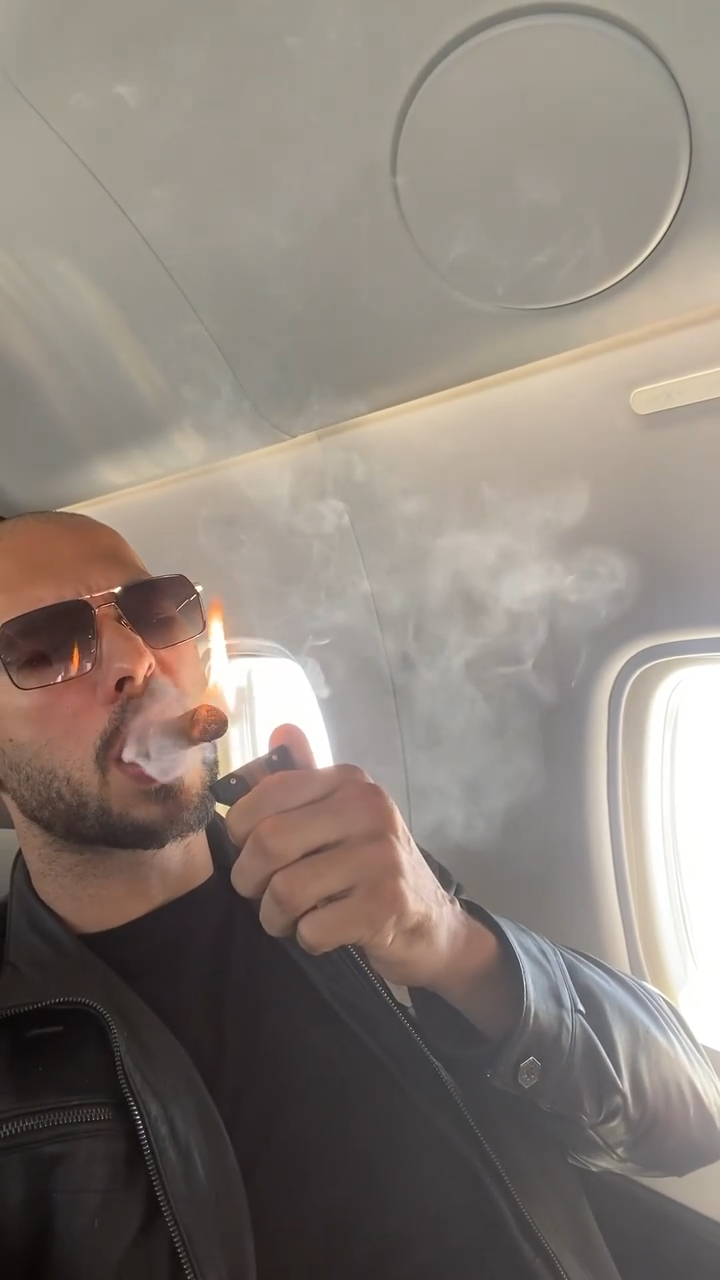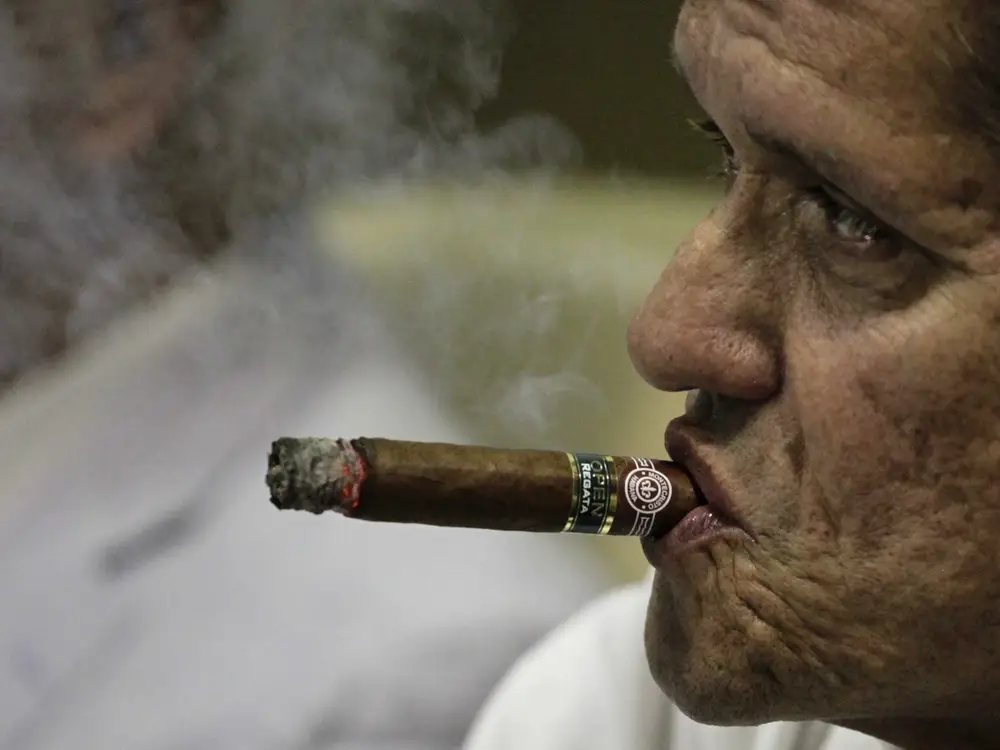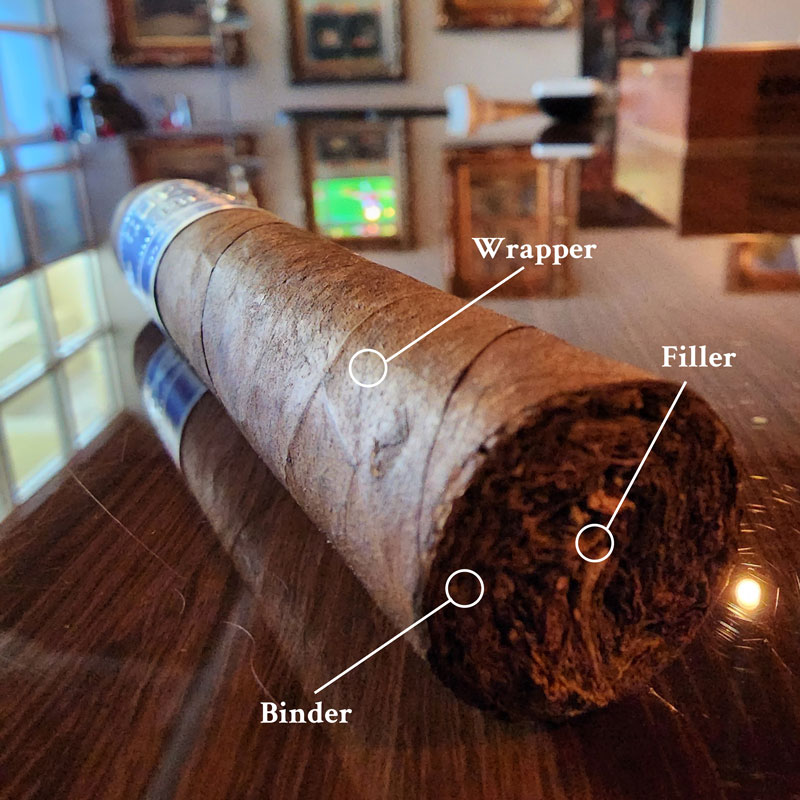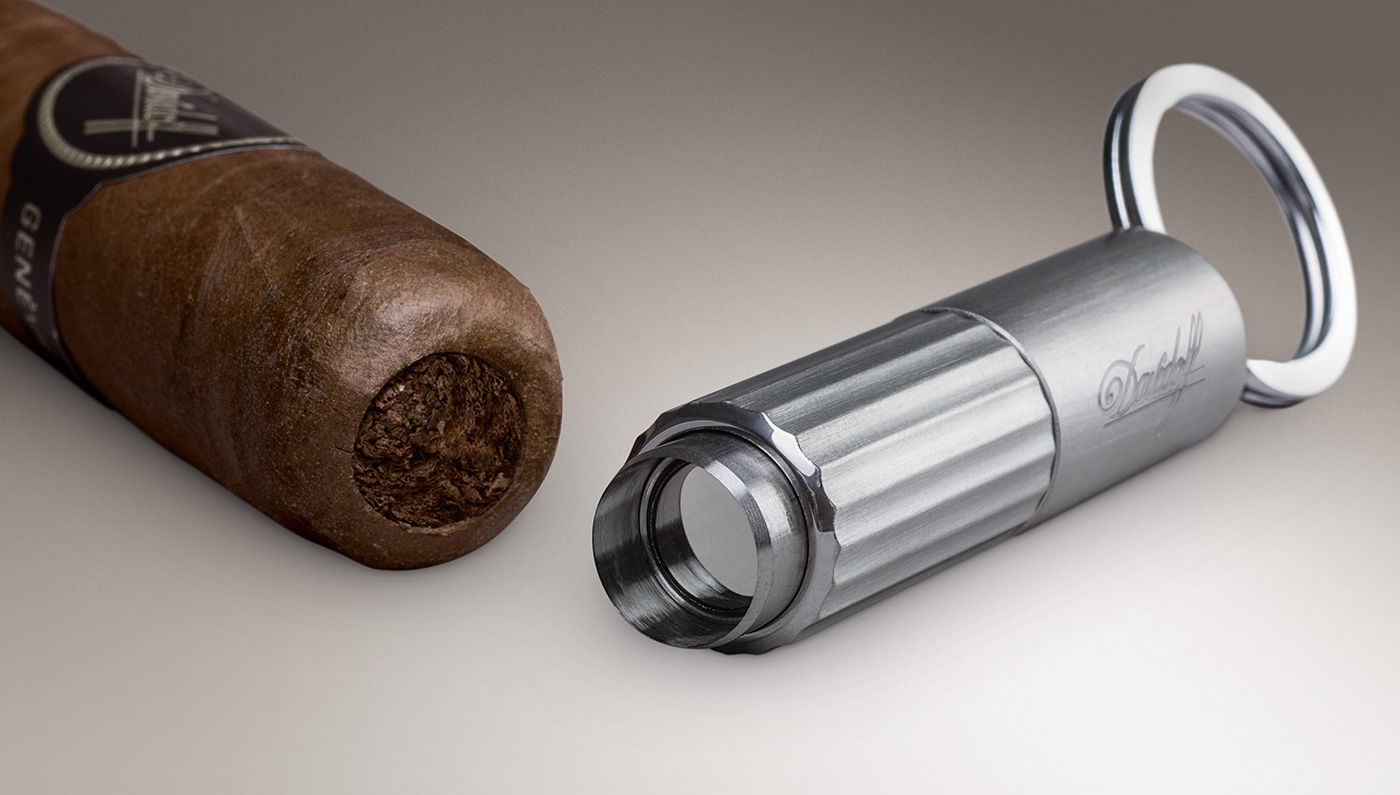Who Invented Cigars and When W – Discover the Fascinating History of Cigar Invented
In the world of tobacco, cigars hold a special place as one of the most iconic and sophisticated forms of smoking. Their origins can be traced back centuries ago, to the time when tobacco was first discovered in the Americas. The history of cigars is intertwined with the exploration and colonization of the New World, as well as the rise of trade networks that spanned continents.
The precise origins of cigars are shrouded in mystery, but most historians believe that the ancient Mayans and Aztecs were the first to cultivate and smoke tobacco. These early civilizations viewed tobacco as a sacred plant, using it in religious ceremonies and as a form of medicine. They would roll the tobacco leaves into a primitive form of cigar, known as a “tobaco,” and smoke it by placing one end in their mouths and lighting the other.
When Christopher Columbus arrived in the Americas in 1492, he encountered the indigenous peoples smoking tobaco and was intrigued by this unfamiliar practice. He and his crew brought back tobacco and the knowledge of smoking it to Europe, where it quickly gained popularity among the elite. The word “cigar” is believed to have originated from the Spanish word “cigarro,” derived from the Mayan term “sikar,” meaning “to smoke rolled tobacco leaves.”
Over time, the cigar-making process evolved, with significant advancements made during the Industrial Revolution. Machines were invented to automate the rolling and packing of cigars, making them more accessible and affordable. Cigar production became an important industry, particularly in countries like Cuba, the Dominican Republic, and Nicaragua, where the climate and soil are conducive to growing high-quality tobacco.
Today, cigars continue to be enjoyed by connoisseurs around the world, appreciated not only for the rich flavors and aromas they offer but also for the sense of tradition and craftsmanship they represent. Despite the emergence of alternative smoking methods, cigars remain a symbol of luxury and refinement, a link to the past in an ever-changing world.
Beginnings of Tobacco Use
Tobacco has a long history of use in different cultures around the world. Although the exact origins of tobacco use are unknown, evidence suggests that it has been cultivated and used for thousands of years.
One of the earliest records of tobacco use comes from ancient Central America, where tobacco leaves were discovered in Mayan pottery dating back to around 5000 BCE. The Mayans were known to use tobacco for religious and medicinal purposes, as well as for pleasure.
In North America, indigenous tribes used tobacco for ceremonial purposes and as a trade item. The Native Americans would smoke tobacco in pipes made from clay or stone, and sometimes in the form of cigars or cigarettes made from rolled tobacco leaves.
In Europe, tobacco was introduced by Christopher Columbus, who encountered it during his voyages to the Americas in the late 15th century. It was initially used by sailors and explorers as a medicinal remedy. From there, tobacco gained popularity and was consumed in various forms, including smoking and chewing.
Over time, tobacco became a significant cash crop in colonial America, leading to the establishment of tobacco plantations and the development of trade networks. The demand for tobacco grew steadily, and by the 18th century, smoking tobacco became a widespread habit among Europeans.
Today, tobacco use continues to be prevalent worldwide, despite the well-known health risks associated with it. The history of tobacco use is not only an exploration of cultural practices but also a reminder of the complex relationship humans have had with this plant throughout history.
Prehistoric Origins of Cigars
The invention of cigars can be traced back to prehistoric times, with the use of tobacco dating back thousands of years. The ancient tribes of Central and South America are believed to have been some of the first to discover and cultivate the tobacco plant.
Early tobacco usage can be traced back to as early as 5000 BCE, with evidence of tobacco cultivation found in the Amazon rainforest region. Archaeological findings suggest that tobacco leaves were dried and crushed, then smoked in various ways, including through pipes and rolled-up leaves.
Ancient Rituals and Medicinal Use
Ancient tribes viewed tobacco as a sacred plant and used it in various rituals. It was often smoked during religious ceremonies and offered as a gift to the gods. The smoke was believed to carry prayers and wishes to the spiritual realm. Additionally, tobacco was used for its perceived medicinal properties. It was believed to have healing powers and was used by indigenous cultures to treat various ailments.
Evolution to Modern-day Cigars
As societies evolved, so did the methods of smoking tobacco. It is believed that the ancient Mayans and Aztecs in Central America were among the first to wrap tobacco leaves in a crude form of paper and smoke them in a similar fashion to modern-day cigars. The practice of smoking rolled tobacco spread throughout the Americas, with different regions developing their own unique smoking techniques and traditions.
The popularity of cigars continued to grow, and they eventually made their way to Europe through early explorers and settlers. In Europe, cigars became a popular luxury item and were often associated with wealth and status.
In conclusion, the prehistoric origins of cigars can be traced back to ancient civilizations in Central and South America, where tobacco was first discovered and cultivated. From there, the practice of smoking tobacco evolved and spread, eventually leading to the modern-day cigar.
Early Cultivation of Tobacco
Tobacco has a long and fascinating history, dating back thousands of years. The origins of tobacco cultivation can be traced back to the indigenous peoples of the Americas, who were the first to cultivate and use tobacco for various purposes.

The cultivation of tobacco began in the Americas around 5,000 BC, where it was primarily used for religious and medicinal purposes. Native American tribes used tobacco in rituals and ceremonies, as well as for its supposed healing properties.
Indigenous Tobacco Varieties
Early indigenous varieties of tobacco were small and bitter, quite different from the tobacco we are familiar with today. These varieties were primarily used for smoking and chewing, and were considered sacred by many Native American tribes.
Over time, as trade and exploration expanded, tobacco cultivation spread to other parts of the world. European explorers, such as Christopher Columbus and Hernán Cortés, encountered tobacco during their expeditions and brought it back to Europe, where it quickly gained popularity.
Commercialization and Global Spread
In the 16th and 17th centuries, tobacco became an important cash crop in many European colonies, especially in the Americas. Large-scale cultivation and production of tobacco began, and it became a major trade commodity.

Colonies in North America, such as Virginia and Maryland, became significant tobacco producers. The introduction of tobacco production in these colonies helped drive their economic growth.
Tobacco cultivation also spread to other parts of the world, including Africa, Asia, and the Middle East. The popularity of tobacco grew rapidly, and it became a staple crop in many regions.
Today, tobacco continues to be cultivated and consumed worldwide, although its use has become more controversial due to its health risks. Nevertheless, the early cultivation of tobacco played a significant role in shaping world history and trade.
The Discovery of Smoking
The act of smoking tobacco has a long and fascinating history that dates back thousands of years. The discovery of smoking is believed to have originated in the ancient Americas, with evidence of tobacco use found in artifacts dating as far back as 5000 BCE.
Native American Origins
It is among the indigenous tribes of the Americas that the practice of smoking tobacco first took hold. Native Americans viewed tobacco as a sacred plant and incorporated it into their spiritual rituals and ceremonies. Smoking tobacco was seen as a way to connect with the spiritual world and communicate with the gods. The act of smoking was often accompanied by prayers, offerings, and the sharing of wisdom.
The Native Americans used a variety of smoking methods, including pipes and rolled tobacco leaves. Pipes were often made from materials such as clay, stone, or wood and were intricately decorated with symbols and patterns that held significant cultural and spiritual meaning. Rolled tobacco leaves were used to create hand-rolled cigars, which were smoked in a similar fashion to modern-day cigars.
European Exploration and Global Spread
The discovery of smoking quickly spread to other parts of the world through European exploration and trade routes. When Christopher Columbus arrived in the Americas in 1492, he and his crew were introduced to tobacco by the indigenous people they encountered. The practice of smoking soon became popular among European explorers and settlers, who brought tobacco back to their home countries.
From Europe, smoking tobacco spread throughout the world, becoming particularly popular in the Middle East, Africa, and Asia. Different regions developed their own unique smoking practices and traditions. In the Middle East, for example, hookahs and water pipes became a popular method of smoking tobacco, while in Asia, smoking tobacco was often rolled in thin leaves and smoked in bamboo pipes.
Today, smoking tobacco is a global practice, with a wide variety of methods and traditions still in use. While the discovery of smoking originated in the ancient Americas, it has since become a part of many cultures and continues to be enjoyed by people all over the world.
Influence of the New World
The discovery of the New World by Christopher Columbus in 1492 had a profound impact on the history of tobacco and its eventual transformation into cigars. The indigenous people of the Americas had long been cultivating and using tobacco for various purposes, including as a ceremonial and medicinal plant.
When Columbus and his crew first landed in the Caribbean, they encountered the Taino people, who introduced them to tobacco and the practice of smoking it in the form of rolled-up leaves. This encounter marked the beginning of the European fascination with tobacco and its eventual spread throughout the Old World.
However, it was during the colonization of the Americas by the Spanish and Portuguese that the cultivation and production of tobacco on a large scale began. The European settlers quickly recognized the economic potential of tobacco and established extensive tobacco plantations in areas such as Cuba, the Dominican Republic, Brazil, and other parts of Central and South America.
As the European demand for tobacco grew, the indigenous people of the Americas became vital players in the tobacco industry. They shared their knowledge of cultivation techniques and introduced new varieties of tobacco that were prized for their flavor and quality.
| Country | Notable Contributions |
|---|---|
| Cuba | Became renowned for its premium tobacco, especially the region of Vuelta Abajo, which is still considered one of the best tobacco-growing regions in the world. |
| Dominican Republic | Developed a thriving cigar industry, producing high-quality cigars with a unique flavor profile. |
| Brazil | Became a major producer of tobacco, supplying both domestic and international markets with a broad range of tobacco varieties. |
| Central and South America | Contributed to the diversity of tobacco flavors, with each region developing its unique tobacco-growing methods and producing distinct cigar brands. |
Thanks to the influence of the New World, tobacco became a globally traded commodity, with cigars becoming a symbol of luxury and refinement. Today, the legacy of the New World continues to shape the world of cigars, with various countries preserving and developing their unique cigar-making traditions.
The Rise of Cigar Production
With the widespread popularity of cigars in the 19th century, the production of cigars boomed, especially in the Caribbean and Central America. The unique climate and soil conditions in these regions made them ideal for growing tobacco, the main ingredient of cigars.
As demand for cigars grew, so did the need for skilled labor to produce them. Many tobacco farmers turned to immigrants from countries like Cuba, where cigar-making traditions were well-established. These skilled cigar rollers brought their expertise to the new world, helping to establish the cigar industry in places like Cuba, the Dominican Republic, and Honduras.
Cuban Influence
Cuba has long been recognized as the birthplace of some of the finest cigars in the world. The island’s rich tobacco fields and the skill of Cuban cigar makers have earned it a reputation for producing cigars of exceptional quality and flavor.
In the 19th century, Cuban cigars gained popularity among European aristocracy, further fueling demand and increasing production. Cuban manufacturers capitalized on this demand by exporting their cigars to other countries, making Cuban cigars a symbol of luxury and prestige.
Expansion to Central America
As the demand for cigars continued to grow, cigar production spread from Cuba to other countries in Central America, such as the Dominican Republic and Honduras.
The Dominican Republic, in particular, has become a major player in the cigar industry. Its tobacco fields produce some of the world’s finest cigar wrappers, known for their smoothness and flavor. Dominican cigars are often hand-rolled by expert cigar rollers, ensuring a high level of craftsmanship and quality.
Honduras, known for its fertile valleys and ideal climate for tobacco cultivation, has also emerged as a prominent player in the cigar industry. Honduran cigars are often characterized by their bold flavors and rich aromas.
Today, the Caribbean and Central America remain the prominent regions for cigar production, with countries like Cuba, the Dominican Republic, and Honduras continuing to supply the world with premium cigars.
The Industrial Revolution and Cigar Manufacturing
During the Industrial Revolution in the 18th and 19th centuries, cigar manufacturing underwent significant changes. The advent of new machinery and technologies revolutionized the production process, making it faster and more efficient.
One key advancement during this time was the invention of the cigar rolling machine. This machine automated the process of rolling cigars, allowing for mass production on a scale that was previously unimaginable. With the machine, workers could produce hundreds of cigars in a fraction of the time it would take to hand roll them.
The Industrial Revolution also saw the rise of large-scale cigar factories. These factories employed thousands of workers and were equipped with state-of-the-art machinery. This shift from small-scale production to factory-based production led to increased production and distribution of cigars.
Additionally, the Industrial Revolution brought about improvements in transportation and communication. These advancements played a crucial role in the global trade of cigars. Ships and trains allowed for faster and more efficient distribution of cigars to markets around the world.
The Industrial Revolution also had an impact on the overall quality and consistency of cigars. The introduction of standardized machinery and processes ensured that each cigar was rolled to a consistent size and shape, leading to a more uniform smoking experience for consumers.
Overall, the Industrial Revolution played a significant role in the development and expansion of the cigar industry. It brought about radical changes in manufacturing, transportation, and quality control, shaping the cigar industry into what it is today.
Modern Day Cigar Culture
In modern times, cigar smoking has evolved from a historical tradition to a popular hobby enjoyed by individuals around the world. Cigars are now seen as symbols of luxury, relaxation, and celebration.
Cigar culture has expanded to include exclusive clubs, lounges, and events dedicated to the enjoyment and appreciation of cigars. These venues often provide a comfortable and sophisticated atmosphere, where cigar enthusiasts can gather to socialize, discuss their favorite brands, and enjoy high-quality cigars.
One notable aspect of modern cigar culture is the rise of cigar aficionados and collectors. These individuals seek out rare and limited edition cigars, aiming to build impressive collections that showcase their knowledge and passion for cigars.
Cigars are also often associated with special occasions and celebrations. They are commonly enjoyed during milestones such as weddings, birthdays, and promotions. The act of sharing a cigar with friends or loved ones has become a tradition that enhances the significance of these events.
Furthermore, the art of cigar smoking has extended beyond traditional methods. Cigar rolling workshops and classes have gained popularity, allowing enthusiasts to learn the intricate process of rolling and blending tobacco, and gain a deeper understanding of the craftsmanship behind cigars.
With the rise of online communities and social media, cigar enthusiasts are able to connect and share their experiences and knowledge with people from all over the world. Online forums and groups provide a platform for discussions, reviews, and recommendations, fostering a sense of camaraderie among cigar lovers.
In conclusion, modern cigar culture embraces the historical roots of cigar smoking while also recognizing its evolving nature. Cigars continue to hold a special place in society, captivating individuals with their rich history, craftsmanship, and ability to bring people together for moments of enjoyment and celebration.







